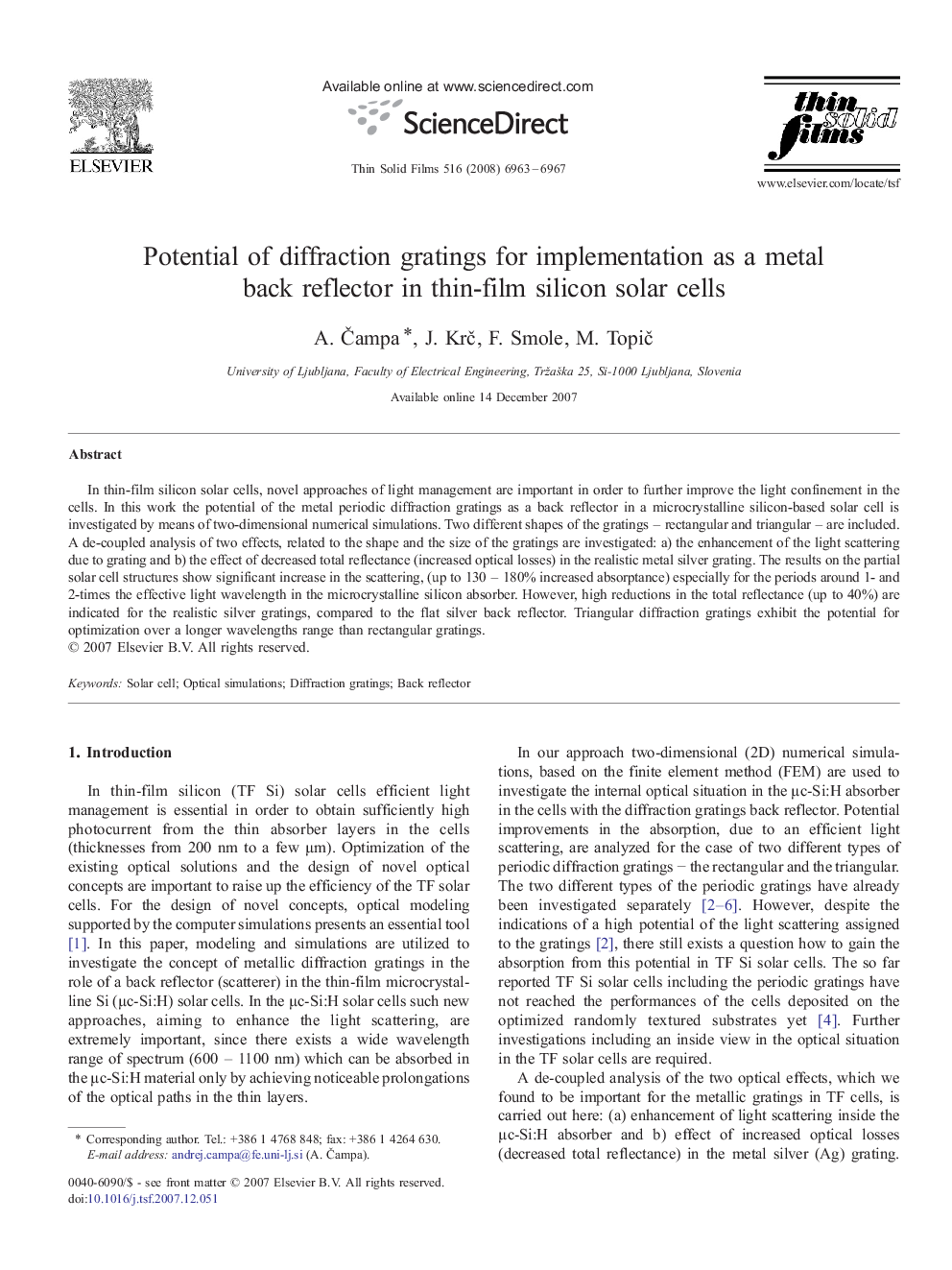| Article ID | Journal | Published Year | Pages | File Type |
|---|---|---|---|---|
| 1674453 | Thin Solid Films | 2008 | 5 Pages |
In thin-film silicon solar cells, novel approaches of light management are important in order to further improve the light confinement in the cells. In this work the potential of the metal periodic diffraction gratings as a back reflector in a microcrystalline silicon-based solar cell is investigated by means of two-dimensional numerical simulations. Two different shapes of the gratings – rectangular and triangular – are included. A de-coupled analysis of two effects, related to the shape and the size of the gratings are investigated: a) the enhancement of the light scattering due to grating and b) the effect of decreased total reflectance (increased optical losses) in the realistic metal silver grating. The results on the partial solar cell structures show significant increase in the scattering, (up to 130 – 180% increased absorptance) especially for the periods around 1- and 2-times the effective light wavelength in the microcrystalline silicon absorber. However, high reductions in the total reflectance (up to 40%) are indicated for the realistic silver gratings, compared to the flat silver back reflector. Triangular diffraction gratings exhibit the potential for optimization over a longer wavelengths range than rectangular gratings.
